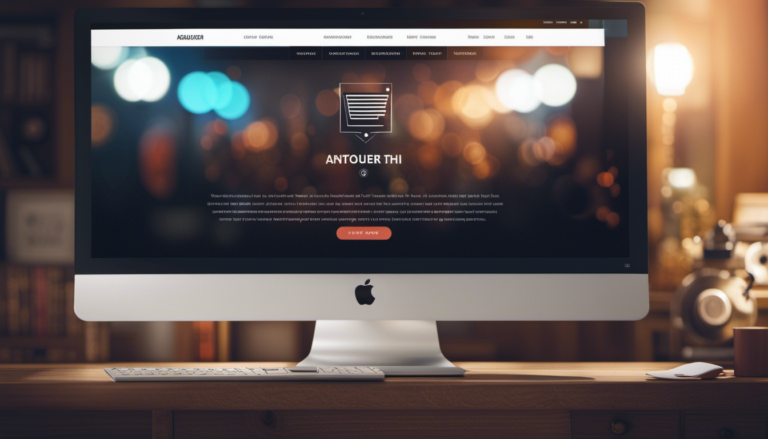In the world of web development, you need to master the art of collecting user input with ease.
Enter HTML input types – text fields, checkboxes, and radio buttons. These powerful tools allow you to create interactive forms that engage your audience.
Whether you want to capture single or multiple selections, organize options in dropdown menus, or even upload files from users, these input types have got you covered.
So get ready to dive into the world of HTML input types and take your web design skills to the next level.
Key Takeaways
- Text fields are essential for collecting user input and should have proper data validation and clear instructions.
- Checkboxes allow for multiple selections while radio buttons allow for single selection options, and both should be grouped and labeled appropriately.
- Dropdown menus organize options and should have custom styling for better appearance and keyboard accessibility.
- File inputs allow users to upload files and should have proper file type and size validation, while hidden inputs provide a way to pass data discreetly.
Text Fields: Collect User Input with Ease
You can easily collect user input by using text fields. Text fields are a fundamental element in web forms, allowing users to enter information such as their name, email address, or any other required data. As a web developer or web designer, it is essential to pay attention to detail and ensure that the text fields you create are clean, well-structured, and follow industry standards.
One crucial aspect of collecting user information through text fields is data validation. It is necessary to validate the data entered by users to ensure its accuracy and integrity. This can involve checking for correct email formats, restricting the number of characters, or enforcing specific input patterns. By implementing data validation, you can prevent errors and ensure that the information collected is reliable.
When using text fields, it is also important to provide clear instructions or labels to guide users on what information to enter. This can improve the user experience and reduce confusion. Additionally, you can enhance the functionality of text fields by adding features like auto-complete or input masks to assist users in entering data accurately and efficiently.
Moving forward to the subsequent section about checkboxes, they allow users to make multiple selections.
Checkboxes: Allow Multiple Selections
Selecting multiple options is possible with checkboxes. Checkboxes are commonly used in web forms to allow users to select multiple items from a list of options. They provide a convenient way for users to make multiple selections without the need for complex dropdown menus or multiple text fields.
When using checkboxes in web forms, there are several use cases to consider. For example, checkboxes are useful when users need to select multiple categories or tags for an article, choose multiple items from a shopping cart, or select multiple options for filtering search results. They provide flexibility and enhance the user experience by allowing users to make multiple selections easily.
To ensure a clean and well-structured design, it is important to follow best practices for styling checkboxes in HTML forms. Here are some tips to consider:
- Use CSS to customize the appearance of checkboxes, such as changing the color or size.
- Use labels to associate checkboxes with their respective options, enhancing accessibility.
- Use consistent styling throughout the form to maintain a cohesive design.
By implementing these best practices, you can create visually appealing and user-friendly checkboxes in your web forms.
Now, let’s move on to discussing radio buttons, which provide single selection options.
Radio Buttons: Single Selection Options
Radio buttons allow users to choose only one option from a list. They are commonly used when there is a need for single selection options. For example, when a user needs to select their gender or choose between different payment methods. Radio buttons provide a clear and intuitive interface for users to make a single choice.
When designing with radio buttons, there are a few considerations to optimize the user experience. First, it is important to group related options together. This helps users easily understand the choices available to them. Additionally, using labels for each radio button improves accessibility and makes it clear what each option represents.
Another design consideration is to pre-select a default option if there is one that is commonly used or expected. This saves users time by automatically selecting a frequently chosen option. Additionally, it is important to provide clear instructions or descriptions for each option to help users make informed decisions.
In conclusion, radio buttons are a useful input type for single selection options. They provide a clear and intuitive interface for users to make choices. Design considerations such as grouping related options and providing clear instructions can optimize the user experience.
Next, we will discuss dropdown menus as a way to organize options in a select menu.
Dropdown Menus: Organize Options in a Select Menu
Dropdown menus are a convenient way to organize and present options in a select menu. When it comes to developing or designing a web page, there are several key elements to consider for dropdown menus. Here are four important points to keep in mind:
- Custom styling: Enhancing the appearance of dropdown menus allows you to match the design of your website. You can change the font, color, size, and even add animations to create a visually appealing user interface.
- Keyboard accessibility: Implementing keyboard navigation for dropdown menus ensures that users can easily interact with the options using only their keyboard. This is important for users with disabilities or those who prefer using keyboard shortcuts.
- Clean and structured code: As a web developer or designer, it is crucial to write clean and well-structured code for dropdown menus. This helps in maintaining the codebase and makes it easier for other developers to understand and work with.
- Following industry standards: Following industry standards for dropdown menus ensures compatibility across different browsers and devices. It also helps in providing a consistent user experience.
With these considerations in mind, let’s move on to the next topic about file inputs: uploading files from users.
File Inputs: Uploading Files from Users
When creating file input fields in HTML, you can use the <input> element with the type attribute set to ‘file’. This allows users to select and upload files from their local device.
You can also use attributes like accept to specify the types of files that are allowed, and multiple to allow users to select multiple files at once.
It is important to validate file types and sizes to ensure that only the desired files are uploaded and that they meet any size restrictions. This can be done using JavaScript or server-side validation, checking the file’s MIME type and size before processing it further.
Syntax and attributes for creating file input fields
To create a file input field, simply use the <input> tag with the type='file' attribute. This allows users to select and upload files from their devices.
When designing this field, it is important to consider validating file formats and handling file uploads. You can set restrictions on the types of files that can be uploaded by using the accept attribute, which specifies the MIME types or file extensions allowed. Additionally, you can limit the size of the uploaded files by using the maxlength attribute.
It is crucial to validate both the file type and size on the server-side to ensure data integrity and security. By doing so, you can prevent malicious files from being uploaded and avoid overloading your server with excessively large files.
Next, let’s explore the process of validating file types and sizes without compromising user experience.
Validating file types and sizes
Make sure you validate the file types and sizes to ensure data integrity and security. When creating file input fields, it is important to validate the input data to prevent any potential errors. To handle form errors effectively, you can incorporate validation checks for the file types and sizes. This will ensure that only files of the allowed types and sizes are accepted.
To grab your attention, here are two important sub-lists to consider:
- Validate file types: Use server-side validation to check the file extension and ensure it matches the allowed types. This prevents users from uploading malicious files or files that could cause compatibility issues.
- Validate file sizes: Set a maximum file size limit and check the uploaded file’s size against it. This prevents users from uploading excessively large files that could overload the server or cause performance issues.
By validating the file types and sizes, you can ensure the integrity of the data being uploaded and enhance the security of your application.
Now, let’s move on to the next section about ‘hidden inputs: storing data behind the scenes’.
Hidden Inputs: Storing Data Behind the Scenes
You can use hidden inputs to store data behind the scenes. Hidden inputs are a type of input field in HTML that allows you to store data on a web page without displaying it to the user. This can be useful for passing information from one page to another, or for storing values that need to be accessed by JavaScript or server-side scripts.
One of the advantages of using hidden inputs is that they provide a way to pass data between pages without the need for complex JavaScript or server-side code. By including hidden inputs in a form, you can easily send additional data along with the form submission. This can be particularly helpful when you need to store information that is not directly entered by the user, such as a user ID or a session token.
When using hidden inputs, it is important to follow best practices to ensure that your code is clean and well-structured. It is recommended to use descriptive names for your hidden inputs and to avoid using generic names like ‘hidden1’ or ‘hidden2’. Additionally, make sure to properly sanitize and validate any data that is passed through hidden inputs to prevent security vulnerabilities.
In conclusion, hidden inputs provide a convenient way to store data behind the scenes in web development. By following best practices and using descriptive names, you can ensure that your hidden inputs are well-organized and secure.
Next, we will explore submit buttons and how they are used to send form data to the server.
Submit Buttons: Sending Form Data to the Server
When creating a submit button, you can use the <input> tag with the type attribute set to ‘submit’. This will create a button that, when clicked, sends the form data to the server.
You can also customize the appearance of the submit button using CSS, such as changing its color, size, or adding a background image.
Additionally, you can handle form submission events using JavaScript to perform actions like validating the data before it is sent to the server or displaying a success message after the form is submitted.
Syntax and attributes for creating submit buttons
To create a submit button, simply add the ‘submit’ value to the type attribute. This will create a basic submit button that can be clicked to send form data to the server.
However, as a web developer or web designer, you have the freedom to explore different design options for submit buttons. You can customize the appearance of the button by applying CSS styles, such as changing the background color, font, or size.
Additionally, you need to consider strategies for handling form submission errors. This involves displaying error messages to users when they submit invalid data or encounter errors during form submission. You can achieve this by using JavaScript to validate the form inputs and display appropriate error messages.
By customizing submit buttons and handling form submission events, you can create a more user-friendly and error-resistant form submission process.
Now, let’s dive into the next section about customizing submit buttons and handling form submission events.
Customizing submit buttons and handling form submission events
Customizing submit buttons and handling form submission events can greatly enhance the user experience and improve the reliability of the form submission process. Here are a few ways you can customize button styles and handle form validation:
- CSS Styling: Use CSS to customize the appearance of your submit buttons. You can change the background color, font style, and size to match the overall design of your website.
- Hover Effects: Add hover effects to your buttons to provide visual feedback to users. This can be done using CSS transitions or animations, making the button change color or size when the user hovers over it.
- Disabled State: Disable the submit button until all required form fields are filled out correctly. This will prevent users from submitting incomplete or incorrect data.
- Form Submission Events: Use JavaScript to handle form submission events. You can validate user input, display error messages, or redirect users to a different page after the form is submitted.
By customizing button styles and handling form validation, you can create a more visually appealing and user-friendly form submission experience.
Conclusion
In conclusion, when it comes to collecting user input on a website, HTML input types offer a variety of options to suit different needs.
Text fields provide a simple and convenient way to gather information, while checkboxes allow for multiple selections.
Radio buttons are perfect for single selection options, and dropdown menus help organize choices in a select menu format.
File inputs allow users to easily upload files, while hidden inputs store data behind the scenes.
And finally, submit buttons are essential for sending form data to the server.
So, next time you’re working on a web development project, make sure to utilize these input types to enhance user experience and streamline data collection.
Remember, just like a well-structured and clean code, using the right input types in HTML can create a seamless user interface.
Don’t forget to pay attention to detail and follow industry standards in order to create a polished and professional website.
Happy coding!







